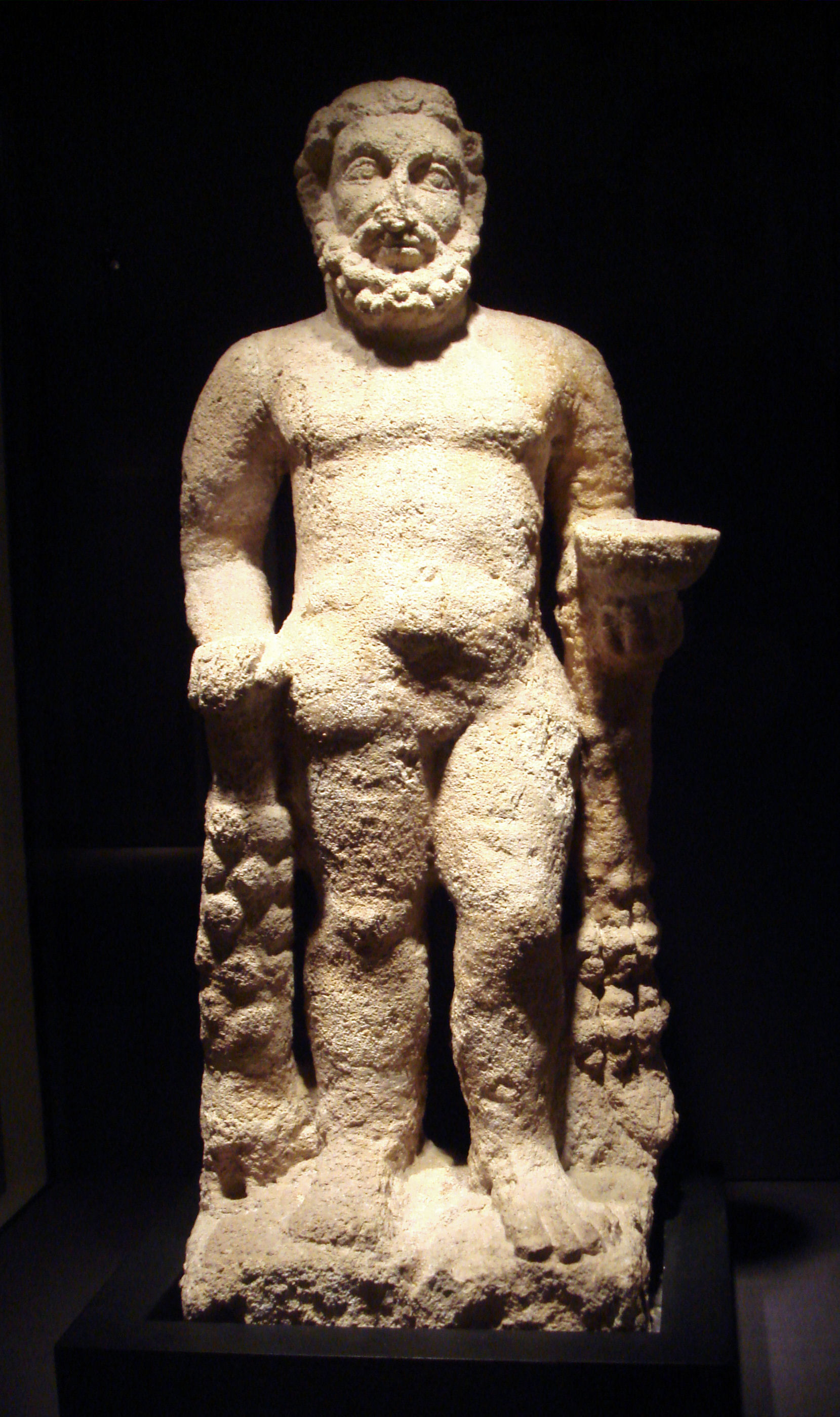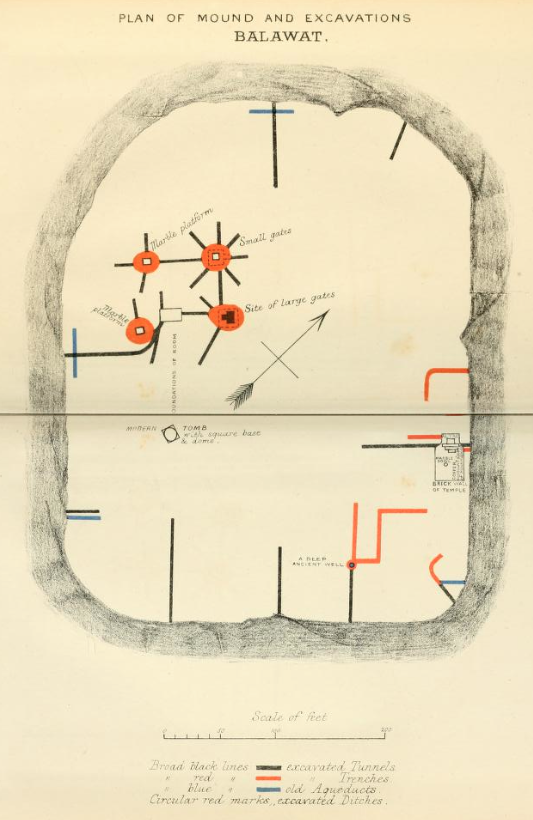|
Balawat Gates
The Balawat Gates are three sets of decorated bronze bands that had adorned the main doors of several buildings at Balawat (ancient Imgur-Enlil), dating to the reigns of Ashurnasirpal II (r. 883–859 BC) and Shalmaneser III (r. 859–824 BC). Their extensive use of narrative art depicting the exploits of Assyrian kings has cemented their position as some of the most important surviving works of art of the Neo-Assyrian Empire, comparable to the extensive Assyrian palace reliefs. When the Neo-Assyrian Empire fell in 614-612 BC, Balawat was destroyed. The wooden elements of the gates decomposed, leaving only the bronze bands (some of which were badly damaged). The remains of two sets of gates can be found in the British Museum's collection, those from the Temple of Mamu are housed in the Mosul Museum. Small sections of the Shalmaneser bronze door bands are also in the Louvre Museum at the Walters Art Museum in Baltimore [...More Info...] [...Related Items...] OR: [Wikipedia] [Google] [Baidu] |
Balawat Gates
The Balawat Gates are three sets of decorated bronze bands that had adorned the main doors of several buildings at Balawat (ancient Imgur-Enlil), dating to the reigns of Ashurnasirpal II (r. 883–859 BC) and Shalmaneser III (r. 859–824 BC). Their extensive use of narrative art depicting the exploits of Assyrian kings has cemented their position as some of the most important surviving works of art of the Neo-Assyrian Empire, comparable to the extensive Assyrian palace reliefs. When the Neo-Assyrian Empire fell in 614-612 BC, Balawat was destroyed. The wooden elements of the gates decomposed, leaving only the bronze bands (some of which were badly damaged). The remains of two sets of gates can be found in the British Museum's collection, those from the Temple of Mamu are housed in the Mosul Museum. Small sections of the Shalmaneser bronze door bands are also in the Louvre Museum at the Walters Art Museum in Baltimore [...More Info...] [...Related Items...] OR: [Wikipedia] [Google] [Baidu] |
Cedar Wood
Cedar is part of the English common name of many trees and other plants, particularly those of the genus ''Cedrus''. Some botanical authorities consider the Old-World ''Cedrus'' the only "true cedars". Many other species worldwide with similarly aromatic wood, including several species of genera ''Calocedrus'', ''Thuja'', and '' Chamaecyparis'' in the Pacific Northwest of North America, are referred to as "false cedars". Plants called "cedar" include: Family Pinaceae *''Cedrus'', common English name cedar, a genus of coniferous trees in the plant family Pinaceae **Lebanon cedar, ''Cedrus libani'', a cedar native to Lebanon, western Syria and south-central Turkey **Atlas cedar, ''Cedrus atlantica'', a cedar native to the Atlas Mountains of Morocco and Algeria **Deodar cedar, ''Cedrus deodara'', a cedar native to the western Himalayas ** Cyprus cedar, ''Cedrus brevifolia'', found in the island of Cyprus's Cedar Valley in the Troodos Mountains *Siberian pine (''Pinus sibirica'' ... [...More Info...] [...Related Items...] OR: [Wikipedia] [Google] [Baidu] |
Hunting
Hunting is the human activity, human practice of seeking, pursuing, capturing, or killing wildlife or feral animals. The most common reasons for humans to hunt are to harvest food (i.e. meat) and useful animal products (fur/hide (skin), hide, bone/tusks, horn (anatomy), horn/antler, etc.), for recreation/taxidermy (see trophy hunting), to remove predators dangerous to humans or domestic animals (e.g. wolf hunting), to pest control, eliminate pest (organism), pests and nuisance animals that damage crops/livestock/poultry or zoonosis, spread diseases (see varmint hunting, varminting), for trade/tourism (see safari), or for conservation biology, ecological conservation against overpopulation and invasive species. Recreationally hunted species are generally referred to as the ''game (food), game'', and are usually mammals and birds. A person participating in a hunt is a hunter or (less commonly) huntsman; a natural area used for hunting is called a game reserve; an experienced hun ... [...More Info...] [...Related Items...] OR: [Wikipedia] [Google] [Baidu] |
Warfare
War is an intense armed conflict between states, governments, societies, or paramilitary groups such as mercenaries, insurgents, and militias. It is generally characterized by extreme violence, destruction, and mortality, using regular or irregular military forces. Warfare refers to the common activities and characteristics of types of war, or of wars in general. Total war is warfare that is not restricted to purely legitimate military targets, and can result in massive civilian or other non-combatant suffering and casualties. While some war studies scholars consider war a universal and ancestral aspect of human nature, others argue it is a result of specific socio-cultural, economic or ecological circumstances. Etymology The English word ''war'' derives from the 11th-century Old English words ''wyrre'' and ''werre'', from Old French ''werre'' (also ''guerre'' as in modern French), in turn from the Frankish *''werra'', ultimately deriving from the Proto-Germanic *'' ... [...More Info...] [...Related Items...] OR: [Wikipedia] [Google] [Baidu] |
Eckhard Unger
Eckhard Unger (Landsberg an der Warthe, 11 April 1884 – 24 July 1966) was a German assyriologist. Unger who was the curator of the Istanbul museum described the remains of Balawat Gates that are still in the Istanbul Museum. Unger was fully aware that the major parts of the gates were in London and Paris as he had visited both locations and discussed them with the respective curators. Eckhard Unger, retrieved 4 September 2014 [...More Info...] [...Related Items...] OR: [Wikipedia] [Google] [Baidu] |
Destruction Of Mosul Museum Artifacts
The destruction of Mosul Museum artifacts became publicly known on February 26, 2015, when the group known as ISIL released a video showing their destruction. Mosul Museum The Mosul Museum, opened in 1952, is the second largest museum in Iraq, with the first being the National Museum of Iraq. The museum is split into four areas of focus: The Assyrian hall, the Hatrene hall, the Islamic hall, and the Prehistoric hall. Importance of the region Iraq's present day borders overlap with the historic extent of Mesopotamia. Mesopotamia is considered to be one of the first areas in which urbanization evolved, beginning around the 4th millennia B.C. The "city" became the center of the new social system, resulting in the need of centralized power. Artistically, the land of Iraq holds evidence of the switch from stylized and schematic figures to more realistic representations of the human form. Writing evolved during this time period as well, allowing people to describe divine figures and conce ... [...More Info...] [...Related Items...] OR: [Wikipedia] [Google] [Baidu] |
Max Mallowan
Sir Max Edgar Lucien Mallowan (6 May 1904 – 19 August 1978) was a prominent British archaeologist, specialising in ancient Middle Eastern history. He was the second husband of Dame Agatha Christie. Life and work Born Edgar Mallowan in Wandsworth on 6 May 1904, he was the son of Frederick Mallowan and his wife Marguerite (née Duvivier), whose mother was mezzo-soprano Marthe Duvivier. His father's family was from Austria. He was educated at Rokeby School and Lancing College (where he was a contemporary of Evelyn Waugh) and studied classics at New College, Oxford. He first worked as an apprentice to Leonard Woolley at the archaeological site of Ur (1925–1930), which was thought to be the capital of Mesopotamian civilization. It was at the Ur site, in 1930, that he first met Agatha Christie, the famous author, whom he married the same year. In 1932, after a short time working at Nineveh with Reginald Campbell Thompson, Mallowan became a field director for a series of expedi ... [...More Info...] [...Related Items...] OR: [Wikipedia] [Google] [Baidu] |
Mamu (deity)
Mamu (also transcribed as Mamud, 𒀭𒈠𒊬) was a Mesopotamian goddess associated with dreams. She was regarded as the daughter of the sun god Utu and could herself be called the "Utu of dreams". References to male Mamu are also known, though it has been proposed that they only represent a late change of gender attested for a number of other originally female deities as well. Character Mamu's name is derived from the word ''mamu'', which means "dream" in Sumerian. As noted by Annette Zgoll, Sumerian has two words with that meaning which are not fully interchangeable. While the word ''mašĝi'' could designate any type of dream, ''mamu'' was specifically a meaningful dream, which was regarded as capable of influencing the future. The ''Assur Dream Ritual Compendium'' describes Mamu as ''dingir mamuda'', "deity of dreams." In Mesopotamian religion, dream deities could act as messengers of other gods, and as such were believed to manifest in dreams to convey information, includ ... [...More Info...] [...Related Items...] OR: [Wikipedia] [Google] [Baidu] |
Coffer
A coffer (or coffering) in architecture is a series of sunken panels in the shape of a square, rectangle, or octagon in a ceiling, soffit or vault. A series of these sunken panels was often used as decoration for a ceiling or a vault, also called ''caissons'' ("boxes"), or ''lacunaria'' ("spaces, openings"), so that a coffered ceiling can be called a ''lacunar'' ceiling: the strength of the structure is in the framework of the coffers. History The stone coffers of the ancient Greeks and Romans are the earliest surviving examples, but a seventh-century BC Etruscan chamber tomb in the necropolis of San Giuliano, which is cut in soft tufa-like stone reproduces a ceiling with beams and cross-beams lying on them, with flat panels filling the ''lacunae''. For centuries, it was thought that wooden coffers were first made by crossing the wooden beams of a ceiling in the Loire Valley châteaux of the early Renaissance. In 2012, however, archaeologists working under the Packard Humani ... [...More Info...] [...Related Items...] OR: [Wikipedia] [Google] [Baidu] |
Balawat Excavation Plan 1882
Balawat ( syc, ܒܝܬ ܠܒܬ, ') is an archaeological site of the ancient Assyrian city of Imgur-Enlil, and modern village in Nineveh Province (Iraq). It lies southeast from the city of Mosul and to the south of the modern Assyrian town of Bakhdida. Ancient name Balawat is the site of the ancient Assyrian city of Imgur-Enlil. The meaning of Imgur-Enlil is "Enlil agreed". Note that there was also a wall in ancient Babylon named Imgur-Enlil. History of archaeological research The site was excavated in 1878 by archaeologist Hormuzd Rassam. The site was again excavated by Max Mallowan for the British School of Archaeology in Iraq in 1956. A surface survey was conducted by D. J. Tucker in 1989 for the British Museum. The town walls enclosed an area of around 64 hectares. Occupation history The city of Imgur-Enlil was founded by the Neo-Assyrian king Ashurnasirpal II (884-859 BC). It lay up the Derrah river from the Tigris, where the city of Kalhu (Biblical Nimrud/Calah) was situa ... [...More Info...] [...Related Items...] OR: [Wikipedia] [Google] [Baidu] |
Nineveh
Nineveh (; akk, ; Biblical Hebrew: '; ar, نَيْنَوَىٰ '; syr, ܢܝܼܢܘܹܐ, Nīnwē) was an ancient Assyrian city of Upper Mesopotamia, located in the modern-day city of Mosul in northern Iraq. It is located on the eastern bank of the Tigris River and was the capital and largest city of the Neo-Assyrian Empire, as well as the largest city in the world for several decades. Today, it is a common name for the half of Mosul that lies on the eastern bank of the Tigris, and the country's Nineveh Governorate takes its name from it. It was the largest city in the world for approximately fifty years until the year 612 BC when, after a bitter period of civil war in Assyria, it was sacked by a coalition of its former subject peoples including the Babylonians, Medes, Persians, Scythians and Cimmerians. The city was never again a political or administrative centre, but by Late Antiquity it was the seat of a Christian bishop. It declined relative to Mosul during the Middle ... [...More Info...] [...Related Items...] OR: [Wikipedia] [Google] [Baidu] |





.jpg)

